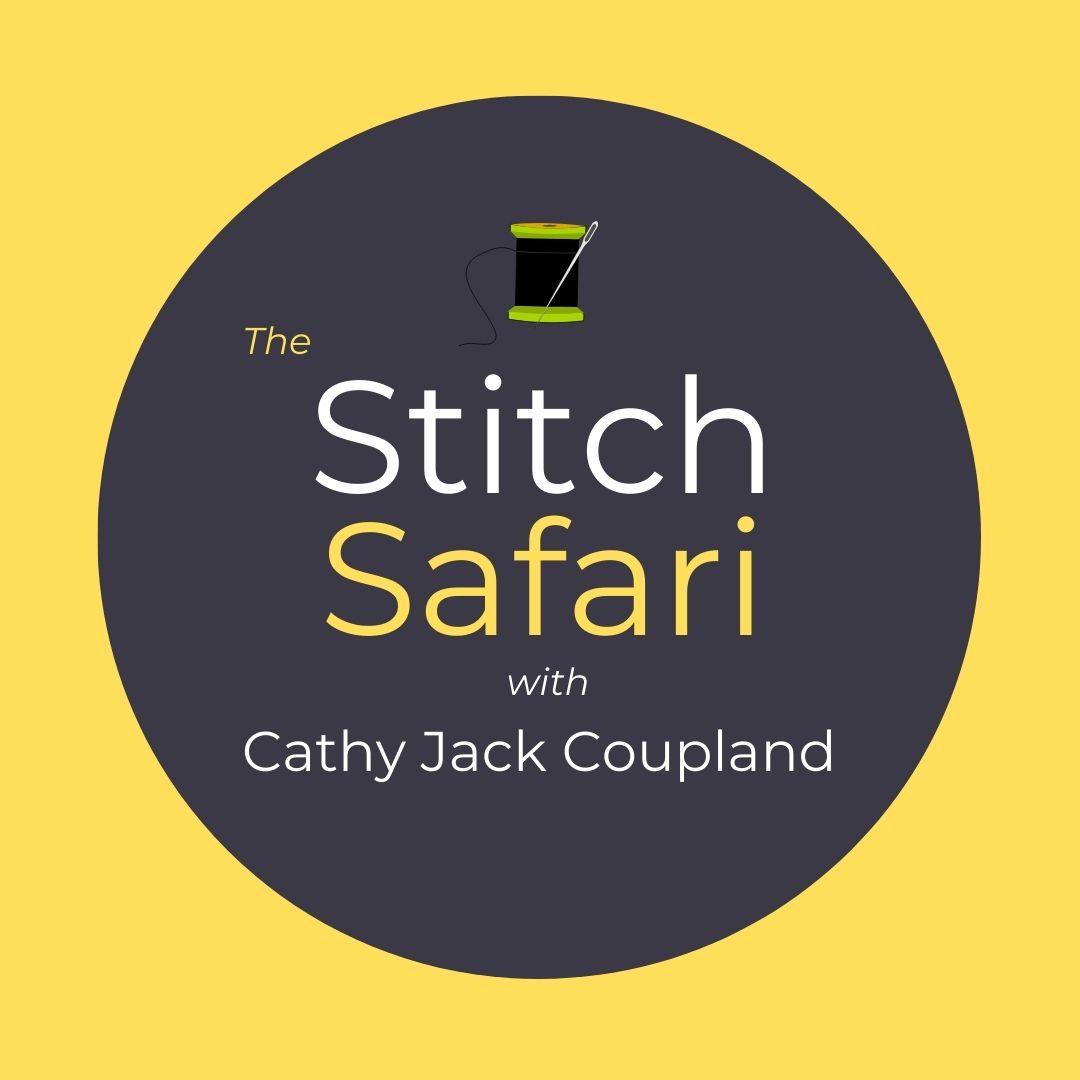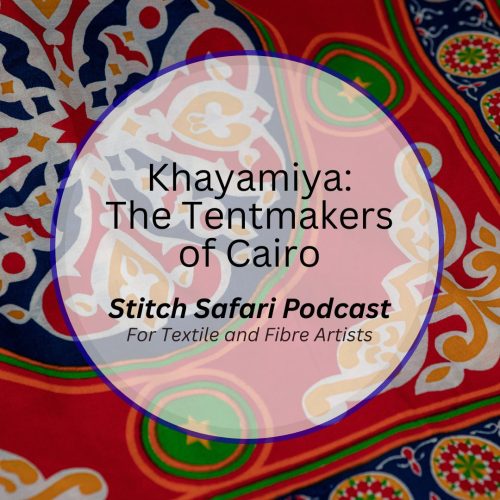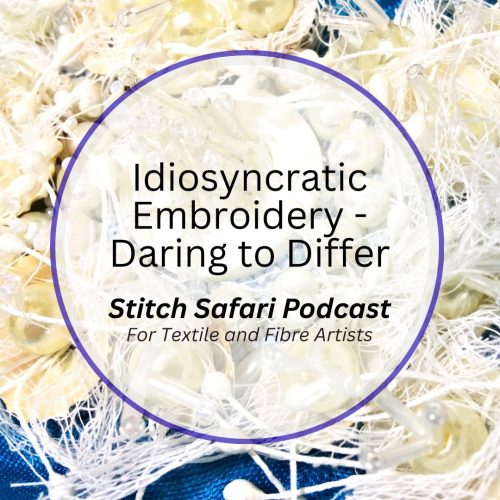You all know my passion for books and videos, well one genre I’ve completely overlooked is the style of book that uses embroidery, textiles and fibre as the imagery to help tell the story.
This caught my attention while researching another topic, so I thought I’d investigate this hugely creative outlet for embroidery and textiles.
And it wasn’t easy, mainly because what kept coming up were books on the technique of embroidery or videos on how to embroider – not what I was looking for at all.
Type in embroidered books on YouTube and you’ll see some charming examples of books – but they’re sample books, needlebooks or how to sew a fabric book – useful but not what I was looking for.
Type in videos that use embroidery to tell a story and you get videos of creating videos or ‘how to’ embroidery videos.
This was harder than I thought until I came across a cache, a collection, a treasure trove of titles that are all stitch or textile-related in the imagery used to create the book. Bingo – that’s exactly what I was looking for.
So sit back and relax Stitch Safari listeners as I bring to you several amazingly creative titles where stitch, embroidery and textiles form the imagery for the storytelling.
If you ask me, this is a vastly underrated and underused area of textiles and embroidery and one we should all be looking at a little more closely.
Now these books are mostly geared towards children and I believe it’s because textiles and embroidery when photographed offer yet another layer of imagination that appeals to the senses – and that’s what children love.
Each of these titles showcases the beauty of using this tactile medium to help tell a story.
Now I’ve chosen titles that each offer something a little different – and I think I’ve hit the jackpot with all of them.
There’s nothing more important than books in our lives, and to be able to engage children from a very young age with a sense of wonder, curiosity and beauty around storytelling is something very special – so let’s hit the road running.
This first book titled The Alphabet Atlas by Arthur Yorinks, published by Winslow Pr in 1999, showcases the magnificent textile art of Adrienne Yorinks who cleverly pieces together cloth to form strips and blocks that can be associated with at least 26 countries – for instance, part of Kenya is represented by African mud cloth.
Stylised maps are created from collages of vibrant pictorial and abstract patterns including evocative colour schemes and imagery of characteristic flora and fauna to help promote the uniqueness and individuality of each nation taking the child on a trip around the world.
Jeanyee Wong provides letters for each country alongside Adrienne Yorink’s amazing quilts in this educational tome aimed at children from 5-9 years of age.
Adrienne Yorinks is an acclaimed textile artist who paints with fabrics. She’s written and illustrated other books including Quilt of States and Stand for Children.
Now this next book is masterful.
Tar Beach, written and illustrated by well-known American quilter Faith Ringgold, was published by Crown Publishers Inc. in 1991. It was her first book.
Described as a children’s book, Ringgold stated in an interview that Tar Beach was not written specifically for children but to recall the essence of childhood and invoke memories associated with it – and I can relate to that statement.
Set in Harlem in 1939, Tar Beach is the roof of an apartment building where the young character’s dream is to be free to go wherever she wants – her dreams come true when the stars help her fly across the city.
Tar Beach won Ringgold the Ezra Jack Keats New Writer Award, the Coretta Scott King Award for Illustration, runner-up for the Caldecott medal, and the premier American Library Association award for picture book for illustration. It was also a New York Times Best Illustrated Book and winner of The Parents’ Choice Gold Award.
Go to YouTube and type in Faith Ringgold reading Tar Beach – it’s a beautiful story.
I believe Tar Beach comprises five quilts made by Ringgold in her ‘Women on a Bridge’ series worked with acrylic on canvas, tie-dyed and pieced fabrics. The series is inspired by African and African American storytelling traditions combining narrative imagery and written text.
Faith Ringgold is an amazing storyteller both in word and stitch.
Now onto something completely different – and I have to say these books are unique – no they’re amazing.
It’s the Cozy Classics series by twins Jack and Holman Wang, published by Chronicle Books.
These are board books – thick easy-to-turn pages for tiny fingers, but what’s unique is that the storytelling is done visually through the use of felted puppets and in twelve words and twelve pages per book – I kid you not – these books go back to the basics of learning in such a charming and visually tactile way – words like sad, sisters, goodbye and marry – it’s all there represented visually in stunningly felted imagery – and guess who makes them?
These brothers created the Cozy Classics Series and Star Wars Epic Yarns and have had work featured in The New York Times, The Wall Street Journal and People magazine – and it’s no wonder.
This is clever work and on their Cozy Classics website, they state ‘Cozy Classics was created with an integrated approach to illustration which combines needle felting, scale model-making and photography – in other words, they do it all.
The intricacy of the puppet-making and the integration of real backgrounds and backdrops in the photography make for stunningly beautiful images in these books – covering titles such as Great Expectations, Pride and Prejudice, Moby Dick, War and Peace, The Nutcracker, Les Miserables, Emma, The Adventures of Huckleberry Finn, The Wizard of Oz, Tom Sawyer, Jane Eyre and Oliver Twist.
All with one word per page – twelve pages per book. This is a clever, thoughtful presentation of classic stories for children who just want to hear someone’s voice and point things out in the pictures – this is early learning at its best.
Their website states that ‘their artistic process is time consuming and labour intensive, but for us, the unique results, not to mention the enthusiastic public response, are worth it’.
No computer graphics are used to create the images – Huckleberry Finn is shot on a real river, and the wedding scene in Pride and Prejudice uses an actual stained glass window as the backdrop – check out the images page on the Cozy Classics website.
Now the last book reviewed is Mama Miti written by Donna Jo Nappoli and illustrated by Kadir Nelson, published by Simon and Schuster in 2010.
It’s based on a true story.
Wangari Muta Maathai, known as Mama Miti founded the Green Belt Movement, an African grassroots organisation empowering people to combat deforestation, soil erosion and environmental degradation. In 2004 Maathai became the first African woman to receive the Nobel Peace Prize – Maathai changed Kenya tree by tree by promoting over 30 million tree plantings.
The imagery is stunning using a combination of collaged bright African textiles with oil paintings representing fields, mountains and trees – but also community. Problems from hunger, dirty water and firewood are solved by planting a tree, offering children a simple message that they can help make a change, tree by tree.
Napoli is an acclaimed, award-winning author of several books. The writing for Mama Miti is lyrical, almost folkloric and would appeal to children from 4-8.
Kadir Nelson is an award-winning American artist whose works have been exhibited in major national and international publications, institutions, art galleries and museums.
There are numerous other publications out there geared towards children that use textiles and stitch as imagery but I thought these four were unique in their storytelling. Each uses the materials differently but each one tells a compelling story from mudcloth, finding freedom, and understanding simple concepts to caring for the environment.
These are important messages for children’s learning and understanding of the world around them and how they fit into it – and each of these books offers that information in a way children love – visually.
The bonus here is textiles and stitch – it adds that tactile sensation unlike anything else and when photographed professionally, looks amazing.
So if you’re sitting at home thinking what could I be doing next, why not write a story and design the imagery for it page-by-page using the skills you possess?
You never know where it may lead you.





